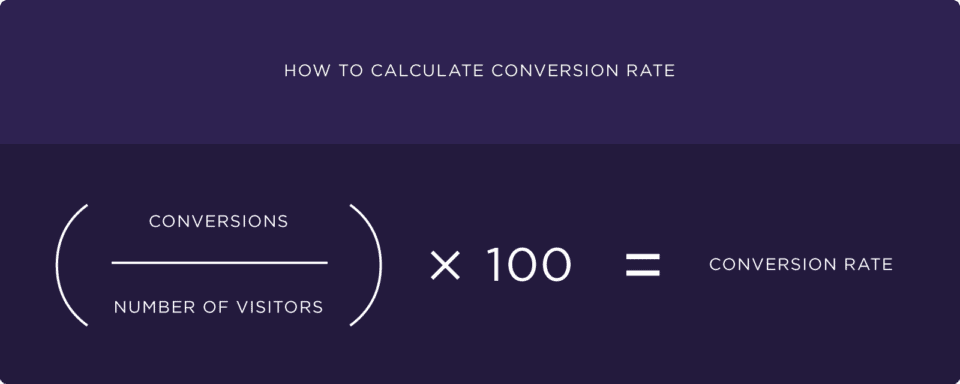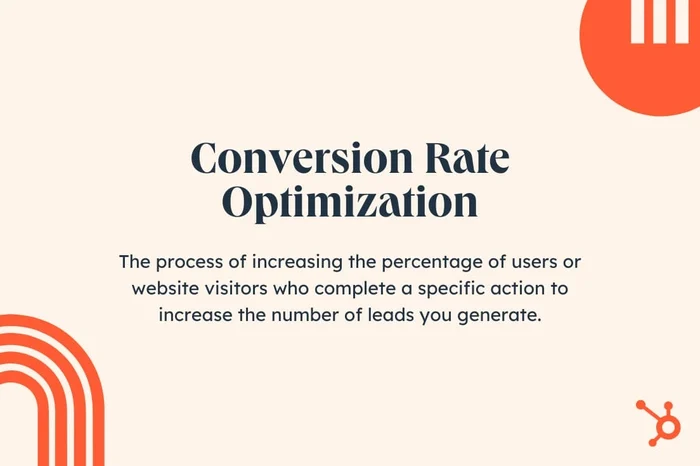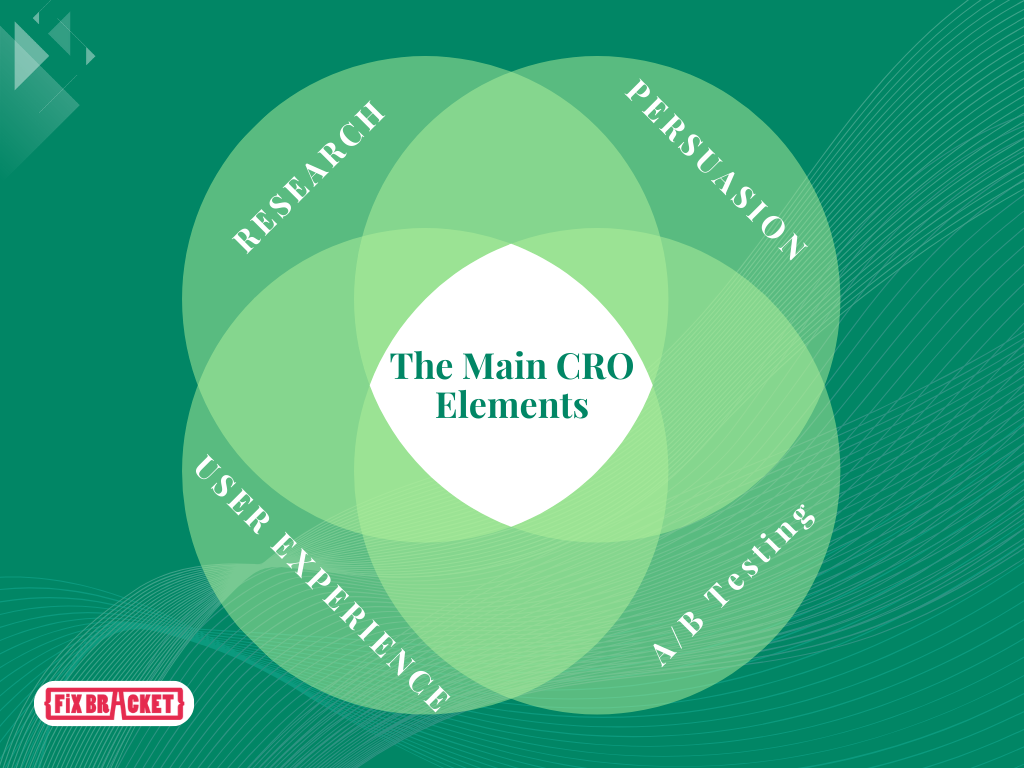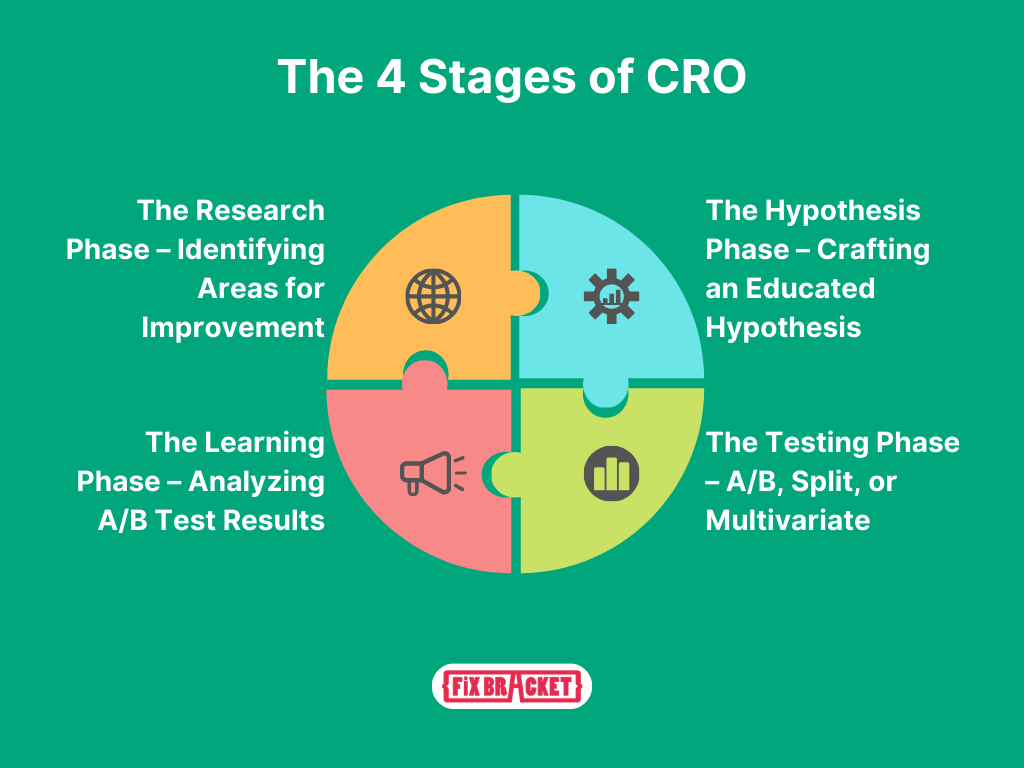Conversion Rate Optimization (CRO): A Complete 2024 Guide.

We have discussed many SEO tips beginners can implement for higher rankings. However, many technical aspects, like conversion rate optimization (CRO), will make your SEO game robust!
In this article, we’ll learn what conversion rate is, and all you need to know is how conversion rate optimization (CRO) benefits your domain.
What Is Conversion Rate?
In digital analytics, the conversion rate represents the proportion of individuals who navigate to a specific webpage and subsequently engage in a predefined action.
To determine this rate, you perform a straightforward calculation: divide the number of actual conversions by the total number of visitors to the respective page.

Conversion Rate Formula
(source: Backlinko)
To illustrate, envision operating a software product geared towards aiding individuals in adhering to employee training. Assuming 100 monthly visitors to your homepage, if 10 of them opt for a complimentary trial, the conversion rate for that particular page stands at a commendable 10%.
What Is Conversion Rate Optimization (CRO)?
Conversion Rate Optimization (CRO) involves systematically enhancing the likelihood of individuals taking a desired action on a website, such as completing a purchase, subscribing to a newsletter, or downloading a file. I believe Hubspot has nailed the definition of CRO:

Conversion Rate Optimization (CRO) – Definition
(source: Hubspot)
This entails the identification and removal of any impediments or friction that may hinder users from completing the desired action.
Online traffic exhibits significant fluctuations. Failing to guide visitors into your conversion funnel initially reduces the probability of them returning to fulfill the desired action.
This represents a missed opportunity for your business.
Conversion rate optimization (CRO) serves as a valuable tool for gaining deeper insights into your website’s usability, understanding customer behavior, and receiving guidance on improving the overall user experience to achieve your objectives.
From a strategic perspective, conversion rate optimization (CRO) is an ongoing and iterative process of learning and optimization. Regrettably, the continuous nature of this effort is often overlooked when discussing the elements of conversion rate optimization.
The Key Elements of Conversion Rate Optimization (CRO)
Conversion Rate Optimization (CRO) comprises four interconnected key components: conversion research, user experience (UX), website persuasion, and A/B testing with personalization. Effectively leveraging these elements enhances the likelihood of increasing conversions and subsequently boosting sales.

- Conversion Research: Obtain valuable insights and improvement suggestions through meticulous conversion research. This involves analyzing web analytics, studying heat maps, reviewing visitor recordings, conducting surveys, implementing user testing, and seeking expert CRO reviews. This aspect is paramount in CRO and is indispensable for its effective execution.
- Website Persuasion: Relying solely on the hope that your website converts visitors is insufficient. To captivate and convert a larger audience, employ copywriting best practices and influential techniques. Utilize social proof, scarcity, urgency, and reciprocity to enhance the persuasive aspects of your website.
- User Experience (UX): Enhance the overall user experience of your website to facilitate seamless browsing and conversion. Implement best practices for optimizing website navigation, forms, and user flow. Regardless of your website’s search engine ranking or persuasive content, an improved UX is pivotal for achieving success.
- A/B Testing and Personalization: Employ A/B testing and personalization techniques to identify the most effective conversion strategies for your website. While highly beneficial, these methods are not strictly essential, especially considering many websites may lack the necessary traffic or conversions to capitalize on them fully.
These components intricately intertwine, contributing to the overall success of CRO, with conversion research playing a pivotal role.
For instance, insights derived from conversion research serve as a foundation for generating better ideas for A/B testing and personalization, creating a symbiotic relationship among these elements.
CRO for Ecommerce & Social Media Marketing Companies
Ineffective marketing campaigns, it is imperative to establish precise objectives as a foundation.
Crafting a robust CRO (Conversion Rate Optimization) strategy is not feasible without the delineation of clear goals and the meticulous monitoring of relevant Key Performance Indicators (KPIs).
As previously discussed in our exploration of conversion rate optimization, it is essential to recognize that not all websites share identical objectives. Before initiating any CRO initiative, it is crucial to articulate your key goals. Let’s delve into specific objectives for different types of websites:
1. For Ecommerce Websites:
If you manage an ecommerce platform, the primary aim is likely to boost sales, which is entirely reasonable. Numerous strategies exist to enhance ecommerce conversions, too many to enumerate comprehensively in a brief discussion.
While augmenting revenue is a central goal, the efficacy of CRO hinges on establishing more nuanced objectives. Consider these goals:
- Decrease the overall bounce rate by 15%.
- Extend the average time spent on the site by 1 minute.
- Convert 35% more blog readers into clients.
- Cut down cart abandonment rates by 20%.
- Trim page loading time by 1.5 seconds.
- Convert 25% more social media followers into clients.
- Enhance the performance of product pages.
Achieving these goals will invariably amplify your conversion rate, thereby bolstering sales. Success in this realm relies on your team’s adeptness in conducting thorough A/B tests and devising innovative solutions.
2. For Media Websites:
Media and social media platforms are renowned for amassing substantial monthly visitors owing to their prolific content creation. While the influx of visitors is advantageous, the challenge lies in transforming them into paying customers or subscribers, necessitating sophisticated marketing strategies.
Here are some goals tailored for media websites:
- Increase the conversion of readers into subscribers.
- Boost monthly downloads of ebooks.
- Persuade more visitors to subscribe to webinars.
- Elevate the click-through rate of newsletters.
- Attract additional guest contributors.
- Foster more link sharing.
- Convert more visitors into social media followers.
- Amplify page views.
- Generate increased leads from blog posts.
These objectives encompass a spectrum of measures, from compelling content to diverse campaigns, designed to enhance conversions on media websites.
The 4 Stages of Conversion Rate Optimization (CRO)
In the realm of Conversion Rate Optimization (CRO), various frameworks are available to assist optimizers in strategizing and executing effective campaigns. Simplifying the CRO process reveals four essential stages.

Stage 1: The Research Phase – Identifying Areas for Improvement
Unlocking successful A/B tests requires more than luck – it demands thorough research. While it’s common for marketers to emulate proven CRO processes, a one-size-fits-all approach doesn’t cut it. To comprehend user actions, scrutinize quantitative data such as bounce rates, traffic sources, and demographics. For qualitative analysis, delve into session recordings, heatmaps, and surveys to unravel the “why” behind visitor actions. A fusion of quantitative and qualitative data provides a holistic understanding of visitor behavior, paving the way for strategic and tailored enhancements.
Stage 2: The Hypothesis Phase – Crafting an Educated Hypothesis
A well-constructed hypothesis, grounded in behavioral research, comprises three elements: a specific change, a desired effect (such as a conversion metric), and the rationale behind the alteration. For example, “Integrating social proofs on product pages will likely increase add-to-cart rates by 5% as visitors gain confidence through validations.” A sound hypothesis is a guiding beacon for optimization efforts, ensuring the testing program stays on course.
Stage 3: The Testing Phase – A/B, Split, or Multivariate?
Before initiating a test, grasp the fundamentals: understand the statistical significance and its critical role, determine the test duration, and choose between A/B, Split, or Multivariate testing. Statistical significance is paramount; a 93% significance means only a 7% chance of accidental results. Use a testing duration calculator to ascertain statistical significance. Choose the right test type based on your objectives: A/B for comparing variations on the same page, Split for different URLs, and Multivariate for testing multiple elements simultaneously.
Stage 4: The Learning Phase – Analyzing A/B Test Results
In this phase, dissect test results, close the testing loop, and glean insights for future endeavors. Beyond a simple win-or-lose assessment, delve deeper into the analysis. For winners, assess whether the costs of changes align with expected revenue. In the event of a loss, view it as a learning opportunity. Delve into research, scrutinize data, extract insights, and refine hypotheses for subsequent tests. Continuous learning is the cornerstone of refining and optimizing CRO strategies.
Conversion Rate Optimization (CRO) Formulas
We have discussed how to calculate fundamental conversion rate optimization (CRO) and have provided you with its basic formula as well. In this section, we’ll learn the three major CRO formulas that businesses can use to get better conversions.
To gain a clearer insight into your current standing regarding conversion rate, consider employing these three widely used formulas.
1. Conversion Rate Calculation:
As previously highlighted, determining the conversion rate involves dividing the total number of conversions or leads generated by the number of visitors or web traffic. Multiply the result by 100 to express it as a percentage.

2. Number of Net New Customers Calculation:
For assessing the number of net new customers, divide your net revenue goal by the average sales price.

3. Lead Goal Calculation:
Finally, to establish your lead goal, take the number of new customers and divide it by your lead-to-customer close rate percentage. This rate is determined by dividing the total number of leads by the total number of customers.

By incorporating these formulas, your business can gain valuable insights into its conversion performance and work towards continuous improvement in a strategically informed manner.
Top 5 CRO Strategies
Explore practical strategies for optimizing conversion rates in your marketing efforts with these actionable tips.
1. Enhance engagement with text-based CTAs in your blog posts.
While it’s common practice to incorporate calls-to-action (CTAs) within blog content, traditional banner-style CTAs might not always capture the attention of your audience.This phenomenon, known as banner blindness, occurs as visitors become accustomed to overlooking banner-like information on websites. Given that site visitors often engage in ‘snacking’ on content rather than reading all the way through, a different approach is needed.
Enter the text-based CTA—a standalone line of text linked to a landing page, styled as an H3 or an H4.
HubSpot conducted a test using text-based CTAs, evaluating their effectiveness in converting traffic into leads compared to regular CTAs placed at the bottom of a webpage.
2. Conduct experiments on your landing pages.Landing pages play a crucial role in modern marketing and are integral to conversion rate optimization.
These pages serve as the transition point where a visitor transforms into a lead or an existing lead deepens their engagement with your brand. Optimize your landing pages by running A/B tests to identify the most effective design and content features for your audience.
A/B testing allows you to swiftly assess different versions of website copy, content offers, images, form questions, and web pages.
This process helps you understand what resonates best with your target audience and leads. Discover insights such as whether a page or form is too lengthy and is impeding conversions.
3. Maximize content performance through strategic optimization.
Ensure your high-performing content gets the attention it deserves.Capitalize on popular blog posts by strategically placing relevant CTAs within them.
Additionally, optimize underperforming landing pages using advanced SEO techniques, such as semantic indexing, to potentially enhance visibility on Google.
Experiment with variations in copy across your website, whether it’s a headline, CTA copy, or product description. Leverage text recommendations and writing tools that provide contextualized copy results tailored to your brand. These measures are designed to attract, guide, and effectively convert your audience.
4. Analyze Google Analytics Data
Now that you’re aware of your website’s current conversion rate and have a defined goal, it’s crucial to delve into the reasons behind any suboptimal performance in conversions.Take advantage of Google Analytics, a powerful tool that provides insights into the strengths and weaknesses of your conversion points. By examining Analytics, you can pinpoint areas where conversions are thriving and identify those that need improvement.
For instance, if cart abandonment is a prevalent issue for your Ecommerce site, Analytics can reveal specific stages in the process where users commonly drop off.
This valuable information guides your testing efforts, allowing you to focus on the areas that require conversion rate optimization (CRO).
5. Utilize Heatmaps for Insight
Incorporate heatmaps into your strategy to visually map out your website, highlighting sections that attract the most clicks and engagement from visitors.
Essentially, heatmaps track and display user activity, showcasing where visitors click the most and spend significant time.
Employing heatmaps is a savvy approach to challenge and validate your assumptions, aiding in the assessment of whether visitors are effectively progressing through the conversion funnel.
This visual tool enhances your understanding of user behavior and informs strategic decisions for optimizing the user experience.
Frequently Asked Questions (FAQs)
Why is Conversion Rate Optimization (CRO) important?
Conversion Rate Optimization (CRO) is crucial for enhancing the probability of visitors taking a desired action on a webpage, ultimately driving business success.
What constitutes a CRO strategy?
A CRO strategy is crafted to transform a higher percentage of website visitors into paying customers.
Though specific details of CRO strategies may differ across companies, the fundamental steps remain consistent. It involves pinpointing key metrics and understanding your target audience, followed by gathering user feedback and relevant data to determine testing areas.
Ultimately, A/B tests are conducted to enhance various pages and elements of your site, aiming to boost conversion rates.
What role do CRO tools play?
Conversion rate optimization (CRO) tools serve the purpose of streamlining and, in some cases, automating the optimization of your conversion rate. They assist in tasks such as lead capture, research, analytics, mouse tracking, heat maps, feedback collection, data content optimization, and the execution of experiments.




